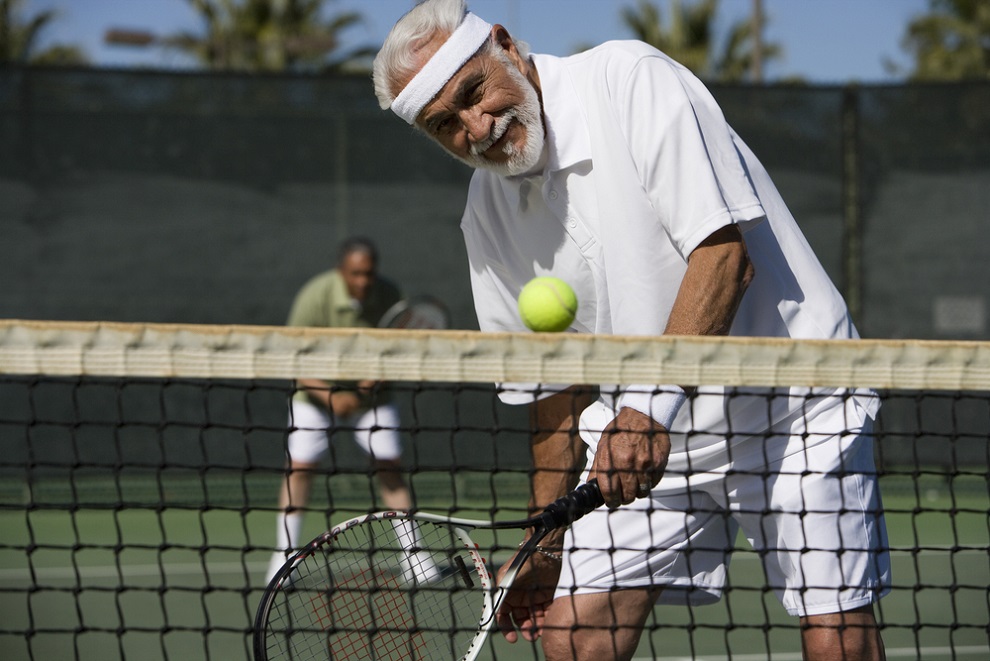What is ego lifting, and where this phrase comes from, is pretty funny. Sometimes, you'll be in the gym and see someone lifting weights that are obviously too heavy. They may grunt loudly, make other annoying noises, and can't maintain proper form. Yet, they continually look around to see who's watching. Do you recognize the scene? This is known as ego lifting.
When it comes to weightlifting, the main goal is to build muscle and power. To get the best results, focusing on your form, number of repetitions, and technique while lifting weights is crucial. The ideal approach is to choose a challenging weight that enables you to complete your workout successfully, not to pose and outdo fellow gym users.
What Exactly is Ego Lifting?
Ego lifting is when someone attempts to lift a weight that's too heavy for them. Whether it's in the spirit of competing with another lifter or trying to impress themselves or those around them, ego lifting isn't focused on lifting correctly; it's focused on getting attention. (1)
In most cases, ego lifting is a fast pass to injury and can put you out of commission for weeks or even months. So, what are the signs of ego lifting?
The Signs of Ego Lifting
There are some clear signs to let you know if you're spending your time in the gym focused on progress or attention, including:
Lifting weights too heavy to maintain proper form
While lifting heavy can help you gain strength, (2) when you lift so heavy you can't maintain proper form or perform 2 sets of at least 6 to 12 reps, and you're straining to do one or two reps, you're more likely to get hurt than build muscle.
Poor control
Struggling to lift at an even pace and moving the body to get momentum are signs you're probably lifting too heavy, and ego lifting is at work. When you lift a weight that matches your strength, you have to work hard, but you also have control.
Not focusing on technique
Making sure you have proper technique can offer significant differences in your results. Lifting with poor technique can put added pressure on muscles and joints, leading to injuries such as strains and fractures. Bad technique not only interferes with progress it can cause some severe injuries.
Range of motion
It's essential to have a full range of motion for each exercise to benefit from weight lifting. When using weights that add too much weight, you can't control the weight to perform a full range of motion for that particular exercise, which is a sign of ego lifting.
Excessive range of motion
Excessive range of motion doesn't serve your goals either. When you move past the point where your muscles become activated, you tend to shift the focus point to other muscles that aren't meant for that specific type of movement, so you have more chance of getting injured.
Training when in pain
Working out can cause some pain, but there are two types of pain to be aware of. One is the normal burning pain or burning sensation you may feel when pushing your body. It can sometimes come with muscle soreness a day or two later. Then, there is the type of pain that can do damage. A dull throbbing or sharp shooting pain, like an electric shock, can result from an injury, signaling you to stop. If you don't stop, you're focused on ego lifting and not working out for health.
Nerve damage is one of the potential health conditions that can result from ego lifting. Lifting weights that are too heavy and compromising form and technique puts pressure on your nerves. Particularly those connected to the muscles you're working. This can lead to nociceptive pain, which is the normal burning sensation you might feel during intense exercise. However, if you continue to push through this pain and ignore it, you risk damaging your peripheral nerves and even the central nervous system.
Long-term ego lifting can significantly impact your quality of life and increase the risk of injury, including nerve damage. Neck pain and issues with blood vessels, such as increased blood pressure, are common side effects of ego lifting.
To safely and effectively manage pain, it's crucial to avoid ego lifting. Instead, prioritize proper form, technique, and a weight that allows you to maintain a full range of motion without excessive strain on your nerves and muscles. Doing so can protect your nervous system and overall health while achieving your fitness goals.
Why is Ego Lifting Popular?
We know that ego-lifting doesn't help us reach our goals, so why do people still do it? There's something about being in a gym and lifting weights that wakes up the ego. For new lifters, it can be about bragging rights about how much you can lift. For seasoned pros, it may be related to proving they still know how to do the job. Either way, ego lifters have something to prove and get some satisfaction from it despite risking injury.
How To Reduce Your Chances of Becoming an Ego Lifter?
To see progress in the gym, you should focus on using proper form and working to the point of fatigue but not experiencing any pain. To avoid ego lifting, don't worry about anyone else. We all have different goals, so focus on yours. These tips can help you make the most out of every workout. (3)
Master technique
When you start lifting, pay attention to technique from the beginning to avoid learning the wrong way to perform each type of exercise. Good technique not only offers better, quicker results, but it can save you from injuries.
Focus on medium to high repetitions
Lifting weights where you can perform 2-3 sets of 8 to 12 reps with good form is optimal for building muscle. If you can't manage all 12 reps with good form, go lighter, and if all 12 repetitions are easy, go a bit heavier. If you want to get stronger, try a few days a week with heavier weights at lower reps. As long as your form is good, it will help you reach your goals.
Form is key
Working out with a partner or personal trainer who can watch your form can be helpful. When you're on your own, the mirror can keep you focused on form, but props such as squats over a box or letting your chest touch the floor during push-ups can also be beneficial.
Slow your tempo
Your form can improve when you slow down your tempo. It can help keep muscles engaged and working, improving results.
Be patient
Results won't happen overnight, so it's essential to be consistent with workouts, eat whole foods that fuel you and be patient with yourself. Consistent action offers results, but it does take time. Be prepared to put in the time and work out in a way that minimizes injuries.
Conclusion
When trying to increase strength, mastering a routine comes down to good habits, such as correct form and technique. When you put the basics aside for a shortcut, you not only don't accomplish your goals but also increase your chances of injury. Although ego lifting can be detrimental to reaching your workout goals, you can walk into the weight room in any gym and watch it happen. Leave your ego at home to have the best chances of reaching big goals in the gym.





